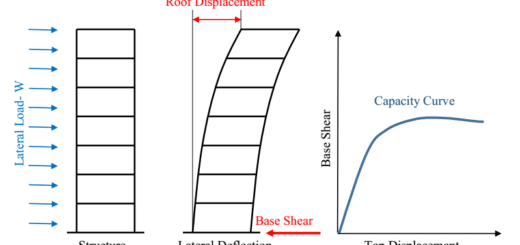Critical Damping Coefficient: A Comprehensive Guide
In the world of engineering and physics, the critical damping coefficient is a term that often comes up when discussing the behavior of dynamic systems. It plays a crucial role in ensuring the stability and efficiency of various mechanical and electrical systems.
In this article, we will delve deep into the concept of the critical damping coefficient, exploring its definition, significance, and real-world applications, with a specific focus on its relevance in structural engineering design. So, fasten your seatbelts as we embark on this informative journey!
What is Damping?
Before we dive into critical damping, it’s essential to understand the concept of damping itself.
Damping refers to the dissipation of energy in a dynamic system.
In simpler terms, it’s the process of reducing oscillations, vibrations, or unwanted motion in a system. Damping can be achieved through various methods, such as friction, air resistance, or electrical resistance.
Basics of Critical Damping
Critical damping is a specific level of damping that is required to achieve the fastest and smoothest response in a system.
It is the point where the system returns to its equilibrium position without any oscillations or overshooting.
In structural engineering design, critical damping is a key factor in ensuring that buildings and structures withstand external forces and vibrations.
In the realm of structural engineering, critical damping takes on a critical role in the design and construction of buildings, bridges, and other infrastructure.
It helps to ensure that structures can absorb and dissipate energy efficiently, protecting them from damage due to seismic activity, wind forces, and other dynamic loads.
Achieving critical damping in structural systems is essential for the safety and resilience of the built environment.
Overdamping vs. Underdamping in Structural Systems
Just like in other dynamic systems, structural systems can also experience overdamping and underdamping:
- Overdamping: Occurs when the damping coefficient is greater than the critical damping coefficient. While this provides stability, it may result in slower response times.
- Underdamping: Occurs when the damping coefficient is less than the critical damping coefficient. This can lead to excessive sway and vibrations, potentially compromising the structural integrity.
In the face of natural disasters and extreme weather events, building resilience is paramount.
Critical damping contributes significantly to building resilience by minimizing structural movement and damage. It is particularly important in high-rise buildings and skyscrapers.
Seismic engineering is a specialized field that focuses on designing structures to withstand earthquakes. Achieving critical damping is essential in seismic engineering to protect buildings, bridges, and other critical infrastructure from the destructive forces of seismic events.
Calculating the Critical Damping Coefficient in Structural Systems
In structural engineering, calculating the critical damping coefficient is a crucial step in ensuring the optimal performance and safety of a building, bridge, or any other structural system.
The critical damping coefficient, often denoted as , is determined by a combination of factors that define the structural dynamics.
Here, we will explore the key components and formulas used in this calculation.
Key Components for Calculation
To calculate the critical damping coefficient in structural systems, you need to consider the following key components:
1. Mass ():
The mass of the structure plays a significant role in the critical damping calculation. It refers to the total mass of all the structural elements, including the building’s superstructure, foundation, and any additional components such as equipment or furnishings.
2. Stiffness ():
Stiffness represents the rigidity of the structural system. It is essentially a measure of how much force is required to produce a unit deformation (displacement) in the structure. Stiffness is typically measured in force per unit displacement (e.g., N/m or lb/in).
3. Damping Ratio ():
The damping ratio () is a dimensionless parameter that characterizes the level of damping in the system. It indicates how well the structure dissipates energy during dynamic events. The damping ratio can be derived from the critical damping coefficient ().
4. Natural Frequency ():
The natural frequency () represents the frequency at which a structure would vibrate if subjected to an idealized, undamped, free vibration. It can be calculated using the following formula:
5. Damping Coefficient ():
The damping coefficient () represents the level of damping in the structural system. It is a product of the damping ratio () and the critical damping coefficient ().
Critical Damping Coefficient Formula
The critical damping coefficient () can be calculated using the following formula:
=
Where:
- is the critical damping coefficient.
- is the mass of the structure.
- is the stiffness of the structural system.
Significance of Calculating Critical Damping
Calculating the critical damping coefficient is vital in structural engineering for several reasons:
- Structural Safety:
It helps engineers determine the appropriate level of damping required to ensure the structural safety and stability of a building or bridge, especially during dynamic events like earthquakes or high winds.
- Vibration Control:
Understanding critical damping allows engineers to control and minimize unwanted vibrations in a structure, which can affect occupant comfort and potentially lead to structural damage over time.
- Resilience:
In regions prone to natural disasters, such as earthquakes, calculating critical damping is essential for designing resilient structures that can withstand extreme forces.
- Efficiency:
Optimizing damping in a structure ensures that energy is efficiently dissipated during dynamic events, reducing the risk of structural failure.
In practice, structural engineers use computer modeling and simulation software to calculate critical damping coefficients for specific projects. They input the structural properties, such as mass and stiffness, and assess the damping requirements based on the intended use and environmental conditions.
Factors Affecting Critical Damping in Structural Systems
The critical damping coefficient in structural systems is not solely determined by the mass and stiffness of the structure. Several other factors come into play, influencing the level of damping required for optimal performance and safety. Here, we delve into these additional factors:
- Material Properties:
The choice of materials used in the construction of a structure significantly affects its damping characteristics.
Different materials have varying levels of inherent damping.
For example, concrete tends to have higher internal damping than steel. Engineers must consider the damping properties of materials when designing structures.
- Environmental Conditions:
The environmental conditions in which a structure is located can have a substantial impact on its damping requirements.
Structures in regions prone to high winds, seismic activity, or extreme temperature fluctuations may need higher levels of damping to withstand these environmental challenges.
- Structural Geometry:
The geometry and shape of a structure can affect its natural frequencies and, consequently, its damping requirements.
Complex or irregularly shaped structures may have different damping needs compared to simpler, more symmetric designs.
- Occupancy and Use:
The intended use of a structure is a crucial factor in determining its damping needs.
For instance, a residential building may have different damping requirements than a hospital or a laboratory. The comfort and safety of occupants must be considered when setting damping levels.
- Dynamic Loading Conditions:
The type and magnitude of dynamic loads a structure is subjected to can vary widely. For example, a skyscraper in an earthquake-prone area must account for seismic forces, while a bridge may need to withstand dynamic loads from heavy traffic.
Engineers must tailor damping levels to address these specific loading conditions.
- Foundation Characteristics:
The foundation on which a structure rests can influence its damping requirements.
The type of soil, its stiffness, and its ability to dissipate energy can affect how a structure responds to dynamic forces. Engineers consider soil-structure interaction when determining damping coefficients.
- Aging and Maintenance:
As structures age, their damping characteristics may change. Material properties can degrade over time, and maintenance practices can impact damping elements such as bearings and dampers. Regular inspections and maintenance are essential to ensure that damping remains effective.
- Damping Devices and Systems:
Engineers have the option to incorporate active or passive damping devices and systems into a structure to control vibrations and enhance damping.
The choice and performance of these devices, such as tuned mass dampers or base isolators, can significantly affect the overall damping behavior.
- Regulatory Standards:
Building codes and regulatory standards may dictate minimum damping requirements for certain types of structures.
Compliance with these standards is essential to ensure that structures meet safety and performance criteria.
Calculating the critical damping coefficient in structural systems is a fundamental aspect of structural engineering. It involves considering the mass, stiffness, damping ratio, and natural frequency to determine the optimal damping level.
This calculation is essential for ensuring the safety, efficiency, and resilience of structures, making it a cornerstone of modern structural engineering practices. By carefully calculating and implementing critical damping coefficients, engineers contribute to the creation of safer and more robust infrastructure that can withstand the challenges of the built environment.



